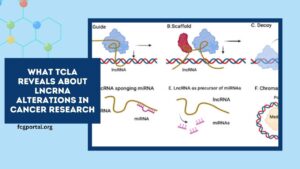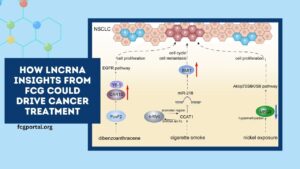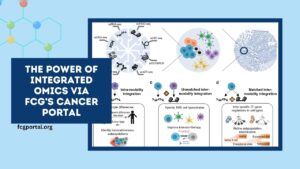Cancer remains one of the most formidable challenges in modern medicine, with treatment resistance and relapse posing significant hurdles.
Recent research highlights the potential of combining Bromodomain and Extra-Terminal (BET) protein inhibition with Poly(ADP-ribose) polymerase (PARP) inhibitors to enhance therapeutic efficacy, even in cancers traditionally considered resistant to PARP inhibition.
This article delves into the mechanisms, clinical data, and future prospects of this combination therapy, focusing on insights from the FCG (Functional Cancer Genomics) research.
Understanding BET Proteins and PARP Inhibition
What Are BET Proteins?
BET proteins, particularly BRD4, are epigenetic regulators that bind to acetylated lysines on histones, influencing gene transcription. In cancer, these proteins often promote the expression of oncogenes like MYC, facilitating tumor growth and survival.
Role of PARP Inhibitors
PARP inhibitors are designed to interfere with the DNA repair process, specifically targeting the repair of single-strand breaks.
In cancers with deficiencies in homologous recombination repair (HRR), such as those with BRCA mutations, PARP inhibition leads to the accumulation of DNA damage, resulting in cell death.
Synergistic Potential: BET Inhibition and PARP Inhibition
Mechanistic Insights
Research indicates that inhibiting BET proteins can suppress the expression of genes essential for HRR, such as BRCA1 and RAD51.
This suppression diminishes the cancer cell’s ability to repair DNA damage, thereby sensitizing them to PARP inhibitors.
Notably, BRD4 amplification has been observed across various cancer types, suggesting a broader applicability of this therapeutic strategy.
Preclinical Evidence
In vitro and in vivo studies have demonstrated that combining BET inhibitors like JQ1 with PARP inhibitors such as Olaparib leads to enhanced DNA damage and increased apoptosis in cancer cells.
This combination has shown efficacy in HR-proficient cancers, including certain breast and ovarian cancer models.
Clinical Data and Trials
ZEN-3694 and Talazoparib in Triple-Negative Breast Cancer
A Phase 1b/2 clinical trial investigated the combination of the BET inhibitor ZEN-3694 and the PARP inhibitor Talazoparib in patients with advanced triple-negative breast cancer (TNBC) lacking germline BRCA1/2 mutations.
The study found that this combination was well-tolerated and exhibited promising clinical activity, suggesting its potential in overcoming resistance to PARP inhibitors in HR-proficient cancers.
Small Cell Lung Cancer Models
Proteomic analyses in small cell lung cancer models revealed that the combination of I-BET762 (a BET inhibitor) and Talazoparib led to the downregulation of proteins like CHEK2 and PTEN, which are associated with HR defects.
This downregulation further sensitized the cancer cells to PARP inhibition, highlighting the therapeutic potential of this combination.
Summary of Key Studies on BET and PARP Inhibition
| Study | Cancer Type | BET Inhibitor | PARP Inhibitor | Key Findings |
|---|---|---|---|---|
| ZEN003694-004 | Triple-Negative Breast Cancer | ZEN-3694 | Talazoparib | Combination well-tolerated; promising clinical activity |
| Sciomics Study | Small Cell Lung Cancer | I-BET762 | Talazoparib | Downregulation of CHEK2 and PTEN; enhanced PARP inhibition sensitivity |
Challenges and Considerations
Resistance Mechanisms
Despite the promising synergy, some cancers may develop resistance to the combined therapy. Mechanisms such as restoration of HRR pathways or alterations in drug metabolism can diminish the efficacy of the treatment.
Ongoing research aims to identify biomarkers predictive of response and to develop strategies to overcome resistance.
Clinical Implementation
Integrating this combination therapy into clinical practice requires careful patient selection, considering factors like genetic profile and tumor characteristics.
Additionally, managing potential side effects and determining optimal dosing regimens are crucial for maximizing therapeutic benefit.
The combination of BET inhibition and PARP inhibition represents a promising therapeutic strategy, particularly for HR-proficient cancers that are typically resistant to PARP inhibitors alone.
Insights from FCG research underscore the potential of this approach in enhancing treatment efficacy and overcoming resistance mechanisms.
As clinical trials progress, this combination therapy may become a valuable addition to the oncologist’s arsenal, offering hope for improved outcomes in challenging cancer types.
FAQs
What cancers could benefit from the combination of BET and PARP inhibitors?
Cancers with HR-proficient status, such as certain subtypes of breast, ovarian, and small cell lung cancers, may benefit from this combination therapy.
Are there any ongoing clinical trials for this combination therapy?
Yes, several Phase 1b/2 clinical trials are investigating the efficacy and safety of combining BET inhibitors with PARP inhibitors in various cancer types.
What are the potential side effects of this combination therapy?
While generally well-tolerated, potential side effects may include hematologic toxicities, gastrointestinal disturbances, and fatigue. Close monitoring during treatment is essential.



